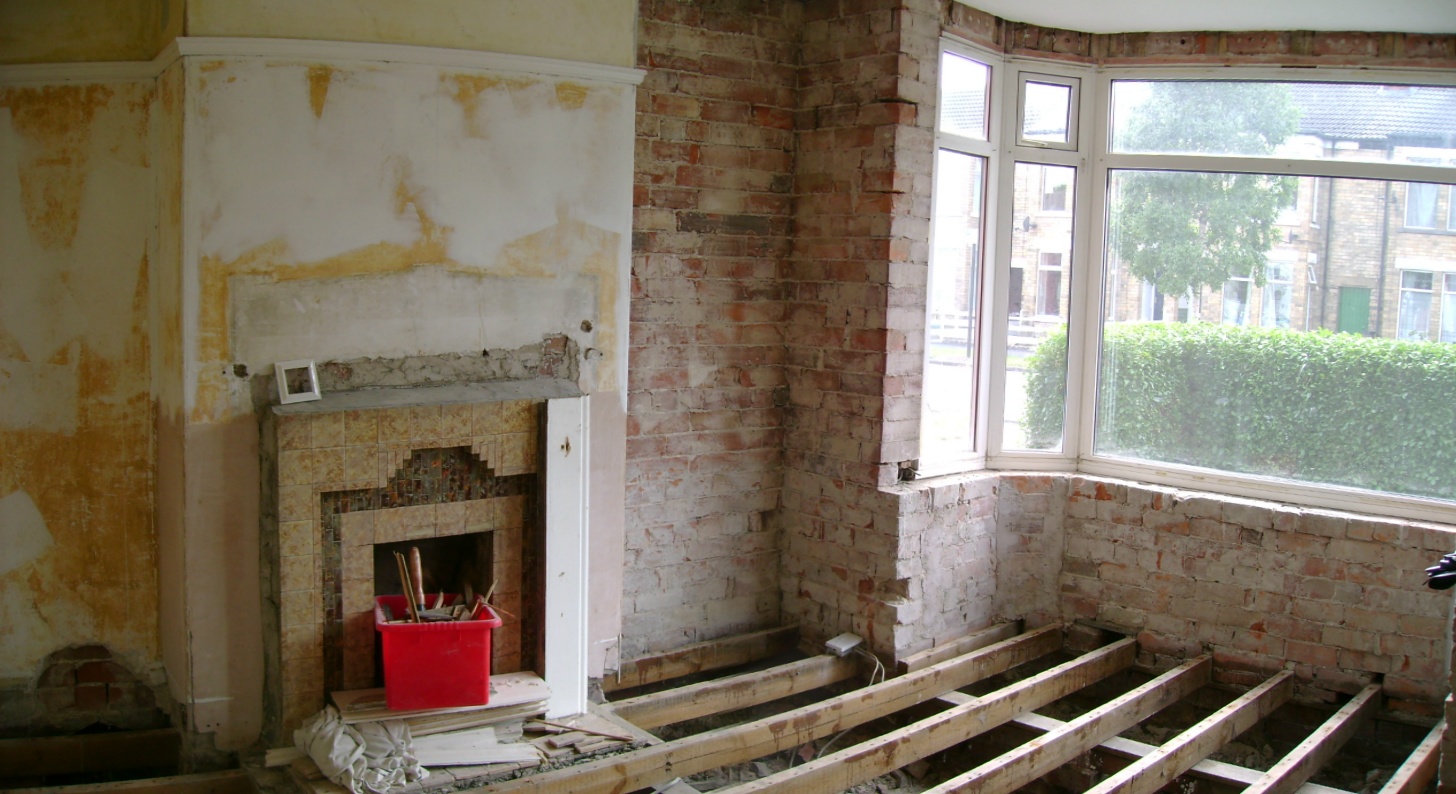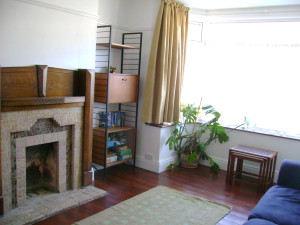When sitting on the sofa on windy days we could feel a draught blowing between our toes.
It’s essential to maintain airflow under floorboards so the joists don’t rot, so there are air bricks in the walls just below floor level to let the wind in. Problem is, that means the underside of the floor is cold, and the wind blows through any gaps, and around the edge behind the skirting boards.
A previous owner had taped up some gaps between the floorboards with parcel tape, which I suppose might work a bit under carpets, but if your floorboards are exposed there are specific products available.
As I was sanding the floor I used the Old Pine Slivers.
How to
If you can get underneath the floor you can insulate from below, stuffing flexible insulation between the joists and holding it up with straps (strips of dpc stapled to the underside of the joists work well). But no such luck in our case, that would be too easy.
So I took a crowbar to the floor and prised up the floorboards. With the floor removed I laid plastic sheeting over the joists to completely draft proof the floor. Care must be taken not to block the air bricks.
The sheeting forms hammocks between the joists into which I poured loose fill recycled newspaper insulation. Don’t worry, it’s treated to make it fire & rodent proof. Above the whole lot I placed a second sheet before replacing the floorboards. This second sheet, directly underneath the floorboards, is to prevent moisture from the room absorbing into the insulation. Or spilt drinks for that matter. The prospect of smelling stale beer for weeks after a party does not appeal. Ideally, this sheet should be a breathable membrane, so if condensation does somehow form underneath, it can escape upwards into the room.
Under Floor Insulation
-
Product Warmcel – loose fill insulation made from recycled newspaper Rating λ=0.040, 200mm deep U-Value 0.2 Cost £2.50 per square meter at 100mm thick
£5 per 8kg bag
£140 for 2 rooms + £70 for plastic sheetingPayback time about 4 years Supplier Natural Insulations
Plastic sheeting from B&Q, sold as Damp Proof Membrane
(thicker gauge is much more difficult to work with).







Top Tip
A Best Practice Approach To Insulating Suspended Timber Floors – a detailed guide on how to do this (properly, with breathable airtight membranes & tapes) by Ecological Building Systems.
Top Tip
Sawdust mixed with PVA adhesive makes decent wood filler. I kept some sawdust from sanding the floors and used it to fill holes and seal under the skirting boards etc.
Replacement Floorboards
Inevitably, when lifting securely fixed floorboards some boards are damaged beyond repair. I found a couple of local suppliers for replacement boards who would exactly copy my sample of tongue and groove floorboard. [Both have since gone, unfortunately.]
Although the new pine boards were paler, staining with tea proved to be surprisingly effective.